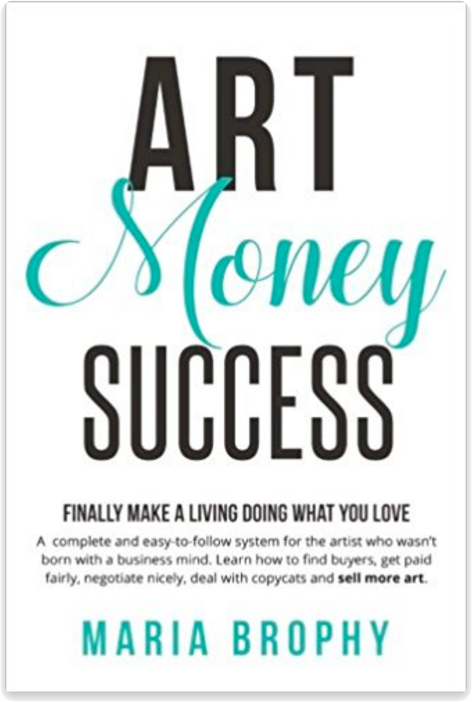
“The folks that put on these fundraisers are not malicious people. They just don’t understand how selling donated art at low prices hurts the art community.” Lori Woodward, Fine Artist
We recently sent Drew to a fundraiser put on by Hinano Tahiti, one of our clients. They asked Drew to do a live, custom painting of a surfboard at the event, which was to be auctioned that night.
There was an exciting bidding war between two men, and of course only one could “win”. It was fun watching the interaction!
We charged a fee to have Drew paint the surfboard at the event. They sold the painting for three times as much and one happy gent went home with the painting. The charity made out and it was a win-win for all.
Hinano Tahiti understood the importance of providing top quality work at auction. They also appreciated Drew’s time and had no problem compensating him for it. If only all fundraisers worked this way…
There are many great charities in the world, and they need your art! But there can be problems with donating art to charities.
The good news is, together we can help charities to get better quality artwork by encouraging them to create a new way of working with artist donations.
THE PROBLEM CHARITIES HAVE BY NOT SHARING REVENUE WITH THE ARTISTS:
You’ll go broke giving to every charity that asks. I know we used to give to anyone who called. It was flattering at first. Then, as years went on, I found many, many problems with giving blindly and not asking for anything in return.
For one, we were losing money we couldn’t afford to. We already had our personal charities that we donated money to.
For another, it was taking a lot of our time and energy. And some of the people we were giving to sadly did not appreciate it.
And lastly, we found that we weren’t wanting to give the best artwork, but rather tempted to give the items that didn’t sell.
Drew and I attended a Surf Industry event a few summers ago. It’s a black tie event held yearly in beautiful Laguna Beach, CA. They hold a charity auction, both silent and live. Many people who attend are wealthy and have no problem bidding on $10,000-$100,000 items.
You would think an event such as this would attract quality artwork. But in the silent auction, I was surprised to see that there were amateur pieces. There were also a few pieces of art from well known artists that appeared as though they took art that wasn’t selling in their studio and donated it to get rid of it.
Auctioning low quality art at a black tie event does not work. But I also know, first hand, that this event does not share in the revenue with the artist donating the work.
And that’s a problem. If the charity is not making it worthwhile financially to donate art, they are not going to attract quality art.
HOW MANY CHARITABLE DONATIONS SHOULD YOU MAKE?
Choose 2 or 3 charities that you care about and give to them. By focusing on just a few charities, you can actually make a difference with your donations. After your chosen few, give only to organizations that share in the revenues of the sales. Never donate anything if it will hurt you financially.
Every week I receive 3 to 4 e-mails and calls from people, friends and clients who ask for a donation. This is the downside to having a lot of friends and doing too much networking!
The requests range from the local High School grad night event to very prestigious events and everything in between.
Always, the charities are excellent organizations which are doing wonderful things. It’s hard to turn these people away, particularly if the person is a friend or client.
But if I gave to even half of the requests, I’d have to shut my business down and get a real job, God forbid!
Usually for the small stuff, like the High School, I’ll donate art prints that are just sitting in the studio. It’s not a problem to do that.
But for the black-tie events, we would not want to donate anything but top quality artwork. Otherwise, what’s the point? If you donate artwork that’s less quality compared to what you are proud of, than you will detract new collectors and you’ll make a bad name for yourself, and the charity itself doesn’t benefit either.
But on the other hand, when donating your best work, you’ll need to be compensated.
Together, we can convince the charities out there that it’s in their best interest to make it enticing for artists to donate their best works.
CHALLENGES WITH CHARITABLE REQUESTS THAT WE CAN HELP TO CHANGE:
- Many charities do not give the artist a portion of the proceeds.
- The expenses out of pocket for art supplies, canvas and frames: Many charities ask for Drew’s painted surfboards. The surfboard itself costs us $600 – $900 depending on the quality and size. And then there’s the art supplies and time to paint it.
- IRS Does not Value Artist’s Time: We are not able to write off the amount of time it takes to paint OR the value. The IRS only allows you to write off your materials, which artists do anyway. If you’re looking for a write-off, you are often better off writing a check for the charity rather than giving them art (unless they split the revenue).
- Nothing to Gain: Other than feeling good about your contribution, there is little to gain. There is no marketing value to these events, unless your name and art is printed on all of their brochures and advertising (this rarely happens).
- Art often will sell at auction for less than it’s worth: Occasionally the paintings we have contributed have auctioned off for less than our collectors pay. This hurts the artist, the collectors and the value of the art.
THERE IS A SOLUTION!
A few years ago we instituted guidelines for charities. I wrote about it on Drew Brophy’s blog back in September – you can read that here.
And thanks to Lori Woodard’s point of view written in her article titled FUNDRAISERS THAT DO IT RIGHT on Fine Art Views Blog last week, I’ve been inspired to fine-tune how I handle the requests. I’ve tidied up a form letter that I now am sending to every request for a donation. There is a copy at the bottom of this post. You are welcome to use it.
TOGETHER, ARTISTS CAN HELP CREATE A WIN-WIN FOR CHARITIES, ARTISTS AND COLLECTORS:
Artists, let’s all get on the same page here and help educate the fundraisers and charities that need our help. If we encourage them to, charities will make it easier for artists to donate their top quality art. It’s a win-win for everyone.
Feel free to copy and use my form letter below:
CHARITABLE DONATION EMAIL FORM LETTER
Thank you for the opportunity to donate art to your organization. I would be honored to have my artwork and name associated with yours and the great work you are doing.
Due to the extremely high volume of requests from many great charities, I have developed guidelines that enable me to donate artwork at less than retail cost. These requirements also help me to reduce losses since current U.S. tax laws are unfavorable to artist donations.
Please consider offering these terms for all of your future artist donations, as your organization will benefit from it greatly by attracting top quality, high value artwork; and over time, will become known as the go-to-organization for unique and valuable art.
My donation guidelines are:
- The organization agrees to split the proceeds from the sale or auction 50/50 (50% to the Artist and 50% to the organization). I ask for payment within 7 business days of the sale. The name, address, phone and e-mail of the buyer will be provided to me for my records.
- A minimum or a reserve price will be set and will be designated by me. (This is required to honor the value of the artwork for my existing collectors and partner galleries.)
- In the event the artwork does not sell, it will be returned by the organization to me, at the organization’s expense, within seven (7) business days following the auction or sale.
If these guidelines are agreeable to you, please let me know and I’ll draw up a Consignment Agreement and send you photos of my donation for your consideration.
Sincerely,
Artist Name Here.














